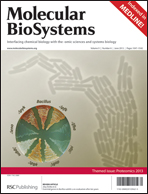Ca2+/Calmodulin (CaM)-dependent signaling pathways play a major role in the modulation of cell responses in eukaryotes. In the chloroplast, few proteins such as the NAD+ kinase 2 have been previously shown to interact with CaM, but a general picture of the role of Ca2+/CaM signaling in this organelle is still lacking. Using CaM-affinity chromatography and mass spectrometry, we identified 210 candidate CaM-binding proteins from different Arabidopsis and spinach chloroplast sub-fractions. A subset of these proteins was validated by an optimized in vitro CaM-binding assay. In addition, we designed two fluorescence anisotropy assays to quantitatively characterize the binding parameters and applied those assays to NAD+ kinase 2 and selected candidate proteins. On the basis of our results, there might be many more plastidial CaM-binding proteins than previously estimated. In addition, we showed that an array of complementary biochemical techniques is necessary in order to characterize the mode of interaction of candidate proteins with CaM.

You have access to this article
 Please wait while we load your content...
Something went wrong. Try again?
Please wait while we load your content...
Something went wrong. Try again?


 Please wait while we load your content...
Please wait while we load your content...